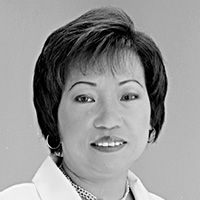Say goodbye to Christmas blues

Do you annually feel sad during the “ber” months, or each time Christmas is just around the corner? If yes, then maybe you have what some people call as the Christmas blues or what the shrinks refer to as seasonal affective disorder (SAD).
SAD is a type of depression that occurs at the same time every year. If you’re like most people with this disorder, your dysphoric symptoms yearly start in September to November and may continue from December to January, draining your energy and making you feel moody. Less frequently, SAD causes depression shortly after the “ber” months or early summer.
This disorder is a cyclic, seasonal condition. This actually means that the signs and symptoms come and go at the same time each year.
Symptoms of SAD:
1. Sadness or depression.
2. Hopelessness.
3. Anxiety.
4. Anergia or loss of energy.
5. Social withdrawal.
6. Hypersomnia or oversleeping.
7. Anhedonia or loss of interest in activities you once loved or enjoyed.
8. Loss of appetite or appetite changes, especially a craving for food high in carbohydrates like puto bumbong or bibingka.
9. Obesity or weight gain.
10. Poor concentration and impairment in processing information.
Causes of SAD:
The specific etiology of SAD remains unknown. It’s likely, as with many mental health conditions, that genetics, age and, perhaps most importantly, your body’s natural biophysical and biochemical makeup all play a role in developing the condition. The following are some specific factors that most likely come into play include:
1. Biological clock (circadian rhythm). The reduced level of sunlight during the cold months may disrupt your body’s internal clock, which lets you know when you should sleep or be awake. This disruption of your circadian rhythm may lead to feelings of depression.
2. Low melatonin levels. The change in season can disrupt the balance of the natural hormone melatonin, which plays a role in sleep patterns and mood. Consult your doctor to see whether taking melatonin supplements is a good option.
3. Low serotonin levels. A decrease in serotonin, a brain chemical (neurotransmitter) that affects mood, mostly plays a role in seasonal affective disorder. Reduced sunlight can cause a drop in serotonin, perhaps leading to depression.
Risk factors in SAD:
1. Gender. Some western studies disclosed that SAD is diagnosed more often in women than in men, but that men may have more severe symptoms.
2. Living far from the equator. SAD appears to be more common among people who live far north or south of the equator. This may be due to decreased sunlight during the cold months and longer days during summer.
3. Family history. As with other types of depression, some studies showed that people with seasonal affective disorder are more likely to have blood relatives with the same condition.
Please do not take signs and symptoms of seasonal affective disorder for granted. As with other types of depression, SAD can worsen and lead to more serious problems if left untreated.
The complications include the following:
1. Suicidal ideation or behavior.
2. Social withdrawal.
3. School or occupational problems.
4. Substance abuse.
Early treatment will help prevent complications, especially if SAD is diagnosed and treated before symptoms get serious.
Home or lifestyle remedies to prevent SAD:
1. Make your home environment sunnier and brighter by opening blinds, adding skylights, trimming tree branches that block the sunlight, sitting closer to bright windows while at home or in the office and changing your yellow dim lights to white lights.
2. Go outside your home. Take a long walk, have a lunch out or simply sit on a bench and enjoy the sun in your patio or garden.
3. Exercise regularly. It is a fact that physical exercise helps relieve stress and anxiety. Being more fit can make you feel better about yourself and this will definitely boost up your mood.
Treatment for SAD may include light therapy, medications and psychotherapy. In light therapy, also called phototherapy, you sit a few feet from a specialized light therapy box so that you’re exposed to bright light.
Light therapy is similar to outdoor light and appears to cause a change in brain chemicals linked to mood. This treatment is easy to use and seems to have few side effects. Individuals with SAD benefit from treatment with antidepressants, especially if symptoms are severe.
Antidepressant medications commonly used to treat SAD include paroxetine, sertraline, fluoxetine, citalopram, venlafaxine, mirtazapine and imipramine. Ask your psychiatrist for his recommended antidepressant and dosage. Usually, he will recommend that you continue to take antidepressant medication beyond the time your symptoms normally go away. Remember that it may take several weeks to notice full benefits from an antidepressant.
Psychotherapy can help you pinpoint and change negative thoughts and behaviors that may be making you feel worse. It will help you learn healthy ways to cope with seasonal affective disorder and teach you how to manage your stress.
Have a very merry Christmas and a prosperous New Year!
(For questions, e-mail me at nina.halilijao@gmail.com)















